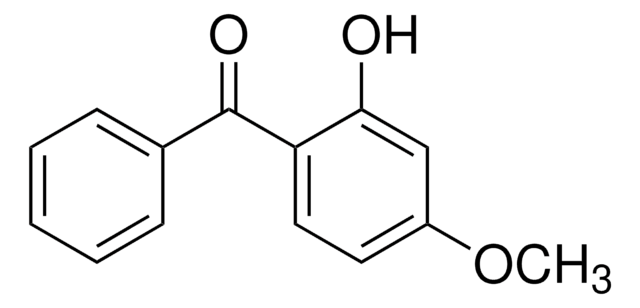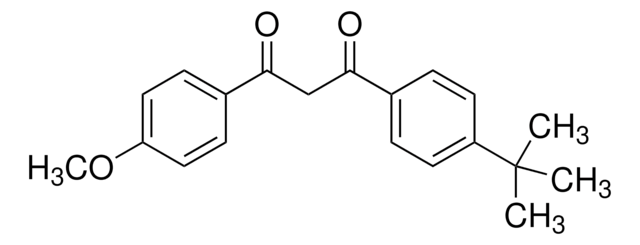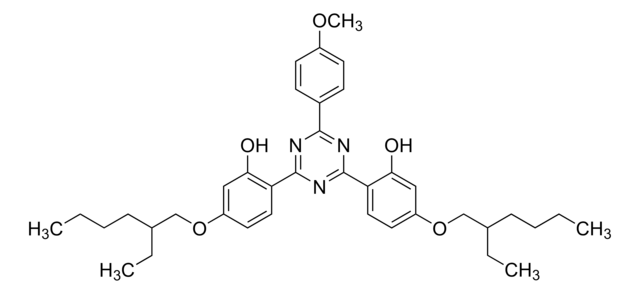78848
2-Ethylhexyl 4-methoxycinnamate
98%
Sinónimos:
4-Methoxycinnamic acid 2-ethylhexyl ester, OMC, Octyl methoxycinnamate
About This Item
Productos recomendados
Nivel de calidad
Análisis
98% (GC)
98%
formulario
liquid
índice de refracción
n20/D 1.545
cadena SMILES
CCCCC(CC)COC(=O)\C=C\c1ccc(OC)cc1
InChI
1S/C18H26O3/c1-4-6-7-15(5-2)14-21-18(19)13-10-16-8-11-17(20-3)12-9-16/h8-13,15H,4-7,14H2,1-3H3/b13-10+
Clave InChI
YBGZDTIWKVFICR-JLHYYAGUSA-N
¿Está buscando productos similares? Visita Guía de comparación de productos
Descripción general
Aplicación
- Simultaneous electrochemical determination of three sunscreens using cetyltrimethylammonium bromide.: This study presents an electrochemical method for the simultaneous determination of sunscreens, including 2-Ethylhexyl 4-methoxycinnamate, using cetyltrimethylammonium bromide, highlighting the importance of analytical techniques in biochemistry (Cardoso et al., 2008).
- Relationship between the ability of sunscreens containing 2-ethylhexyl-4′-methoxycinnamate to protect against UVR-induced inflammation, depletion of epidermal Langerhans (Ia+) cells and suppression of alloactivating capacity of murine skin in vivo.: This study evaluates the protective effects of sunscreens with 2-Ethylhexyl 4-methoxycinnamate against UV radiation-induced skin changes, contributing to the understanding of immune responses in dermatological biochemistry (Walker et al., 1994).
Frases de peligro
Consejos de prudencia
Clasificaciones de peligro
Aquatic Chronic 4
Código de clase de almacenamiento
10 - Combustible liquids
Clase de riesgo para el agua (WGK)
WGK 2
Punto de inflamabilidad (°F)
379.4 °F
Punto de inflamabilidad (°C)
193 °C
Equipo de protección personal
Eyeshields, Gloves
Certificados de análisis (COA)
Busque Certificados de análisis (COA) introduciendo el número de lote del producto. Los números de lote se encuentran en la etiqueta del producto después de las palabras «Lot» o «Batch»
¿Ya tiene este producto?
Encuentre la documentación para los productos que ha comprado recientemente en la Biblioteca de documentos.
Los clientes también vieron
Nuestro equipo de científicos tiene experiencia en todas las áreas de investigación: Ciencias de la vida, Ciencia de los materiales, Síntesis química, Cromatografía, Analítica y muchas otras.
Póngase en contacto con el Servicio técnico








